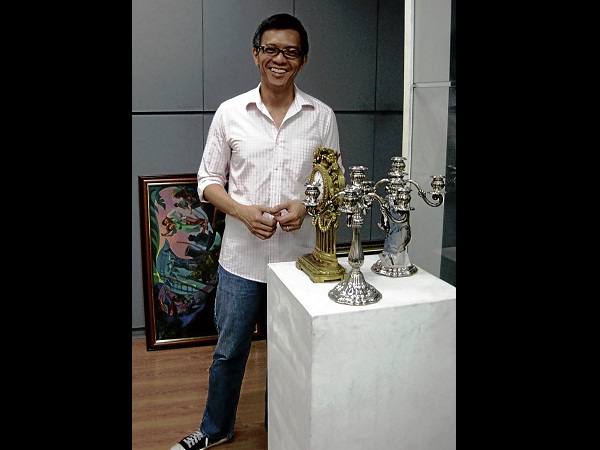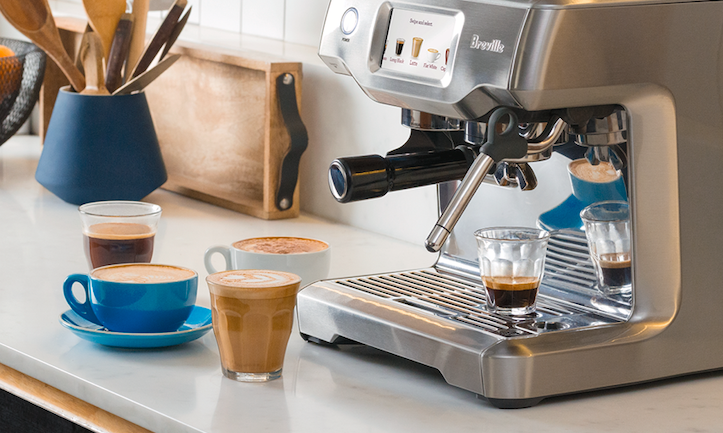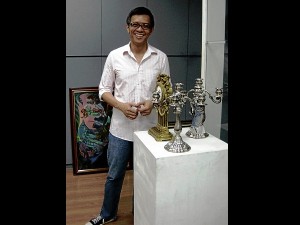
Ramon “Richie” Lerma is the director and chief curator of the Ateneo Art Gallery (AAG) at the Ateneo de Manila University, Loyola Heights, Quezon City. He used to teach at the university’s fine arts program. Today he is an adviser of Salcedo Auctions at Three Salcedo Place, Salcedo Village, Makati City.
He was editor of the book, “Tanaw: Perspectives on the Painting Collection of the Bangko Sentral ng Pilipinas” (Central Bank of the Philippines) for which he received the 2006 National Book Award for Art named after Alfonso T. Ongpin from the Manila Critics Circle and the 2006 Gintong Aklat Award for the Arts from the Book Development Association of the Philippines. This year, he won again for “The Life and Art of Lee Aguinaldo,” a book that was copublished by the AAG with his imprimatur.
Please give us a background of the contemporary art scene and why art forgery is rampant.
Speaking from the vantage point of somebody who’s immersed in the contemporary art scene through my involvement as adviser of the country’s only auction house, there are many artworks being offered right now because of a strong market for Philippine art.
The results of Salcedo Auctions’ recent sale of “Important Philippine Art” held last Sept. 22 reflects this upbeat landscape. Collectors and artists are seeing a strong demand for pieces by established artists such as Anita Magsaysay Ho, Federico Aguilar Alcuaz, Jose Joya and Nena Saguil. A young artist like Ronald Ventura with a small painting, roughly 2×3 feet, entitled “Burnout” sold at the same auction for an impressive amount; and his prices continue to increase. Evidently, this artist hasn’t burned out!
The fact that we now have an auction house in the Philippines is a clear sign of a strong market. In a way, my role at Salcedo as adviser is to help select and weed out pieces and to determine value both from a critical and commercial perspective. The market is still maturing—people out there who have yet to grow in their knowledge of Philippine art are joining the bandwagon in terms of acquiring works, but they are acquiring them from dubious galleries or private dealers not knowing that they’re buying fakes.
There have been paintings by artists like those I mentioned earlier, as well as paintings purportedly by, among others, HR Ocampo, Botong Francisco and Vicente Manansala which have been shown to me whose authenticity I doubt very much—pieces that simply did not pass my standards. The works of these artists are very prone to fakery because of the great demand for their works.
It’s great that there is an auction house that is outside of the usual dealer-gallery system that people can turn to and have complete confidence in what they’re buying. The auction house has a reputation to uphold.
Art must be such big business that it draws out the art forgers who prey on the unsuspecting. Please tell us more.
New or relatively uninitiated art collectors are being introduced by unsuspecting friends to fly-by-night art dealers or substandard art galleries without knowing any better, basing their art-buying decisions on their limited belief that what they’re seeing is authentic. This is very worrisome; and buyers really need to err on the side of caution and be vigilant.
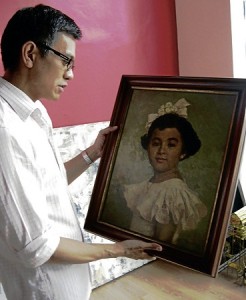
One is through exposure and study which develops into an intimate knowledge of an artist’s work. The second is to know that you cannot know everything, and to rely on the expert knowledge of those whose opinions you respect.
My own knowledge and exposure developed through having been raised by art collector parents, specialist art education both here and overseas and close to 15 years working at the helm of the Ateneo Art Gallery where you have prime examples of the works of important artists.
In a museum setting, you are able to see the works of artists over time, recognizing the scope and the range of their works, including those which may be considered atypical. At Salcedo Auctions, I do not rely solely on certificates of authenticity to determine what in my opinion is an original work of an artist. If all a work depends on to show that it is original is that it comes with a certificate of authenticity, then red flags are raised in my book. That’s a sign of a lack of confidence about the authenticity of the work because in my view, the work of an artist should be able to speak for itself and not rely on a piece of paper to prove its veracity.
There are those whose certificates I just outrightly reject. But there are also those certificates which I’d consider seriously because of my confidence in their level of knowledge and their thoroughness in studying the work of the artist that they are issuing a certificate for.
What advice can you give to newbie collectors?
I think they should turn to those whose opinions regarding artworks are credible for works of older or more senior artists. For contemporary artists, the artists are still around so the works can easily be verified.
Please cite some of the tricks of these art forgers and dubious dealers.
There are these spurious certificates of authenticity issued by individuals whose authority on an artist is questionable. Beware of persons who might have been connected with certain museums or galleries before but who have no professional or scholarly reputation to speak of, or who simply use as credentials their limited exposure working in the art and culture sector. When confronted with a fake that they’ve authenticated, they tend to say, “It’s only my opinion.” That makes them not accountable.
There are also certain family members of deceased artists who issue certificates, especially those whose records of being reliable have been blackened by their having authenticated pieces that are obviously newly painted and passed off as works from the ’50s or ’60s.
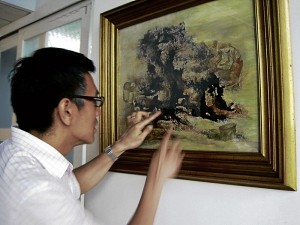
Another forger’s trick is the so-called book piece. An art book is not entirely reliable in establishing authenticity. There are glossy, beautifully presented coffee-table books out there that are nothing more than vanity publications. Not a lot of people know that there are works in private collections that are spurious or dubious in origin, and which are published for a fee. The questionable work of an artist is included in these books and the dealer uses them as reference to pass off a work as an original. The key is to discern the serious art publications, books and magazines from the fluff.
Another trick in the forger’s trade is the abuse of provenance. Just because somebody says that a work being offered comes from the collection of a celebrity or a person known in society doesn’t mean that the work is authentic. What if that person had been duped and just wants to pass on that mistake to someone else? Provenance is still a strong basis to help establish authenticity, but again one must be able to discern which types of provenance carry weight.
What can artists and really interested art collectors do to protect themselves?
More and more contemporary artists are implementing security measures like properly documenting and cataloguing their works; some are even putting seals. Watermarks are also being used to protect the integrity of certificates of authenticity.
Among new collectors, there is this romantic notion that people buying art should simply rely on their personal tastes. But let’s face it—there is no level playing field when it comes to matters of taste and connoisseurship. Those with bad taste or who simply don’t know anything about art or an artist’s work such that their misguided hubris leads them to buying spurious pieces should not go out of their way to spread their lack of knowledge and discernment and show it off!
How many times have I been invited to the homes of individuals who proudly pointed out to me works by so and so artist, boasting that they paid millions for these, without (them) knowing that they had, in fact, been duped—poor things! These people should really have developed their taste through exposure and education before jumping into the art market.
It’s also dangerous to say, “I’ll buy what I want.” That’s financially irresponsible because if what you buy is a fake, then you are supporting the forgers. Remember that art isn’t collected for decoration alone. In my mind, the higher vision for collecting art is that it represents our own intellectual and aesthetic pursuits. It symbolizes our respect and love for our own culture. We honor those artists who are worthy of that support.
By that same measure, collectors should reject artists whose motives are purely commercial. The only intention of putting forms and colors on canvas or shaping figures into a sculpture should only be because it is this idea that the artist sees in his mind’s eye.
Let me give an example. In the contemporary art market, what’s popular among buyers nowadays are works with dark and anguished subject matter. Now, anyone who can wield a brush wants to churn out tortured paintings! But do these people really understand what they’re exhibiting?
So what do you actually tell people?
I tell them, “Don’t get carried away too much by fads. You need to be able to see where the true artistry and importance lies. National Artists and the likes of Fernando Zobel, David Medalla, Nena Saguil, Roberto Chabet and Onib Olmedo, for example, deserve our esteem.
Many of today’s generation of artists gained their own visions and developed their own styles based on what these pioneers set out to do. They, in fact, are the sources of these ideas. They are duly regarded, and are worthy of adulation. The value that their works command, therefore, is well-deserved.
How does one enjoy art without fear?
Part of the pleasure of collecting comes from being confident about where you’re sourcing your art. You have to be diligent and cautious. There’s lots of room to find art that you can enjoy.
The satisfaction that one gets shouldn’t just be based on one’s sentiments on beauty or aesthetic pleasure, but should also resonate with a certain sense of purpose in the definition and development of Philippine art.

